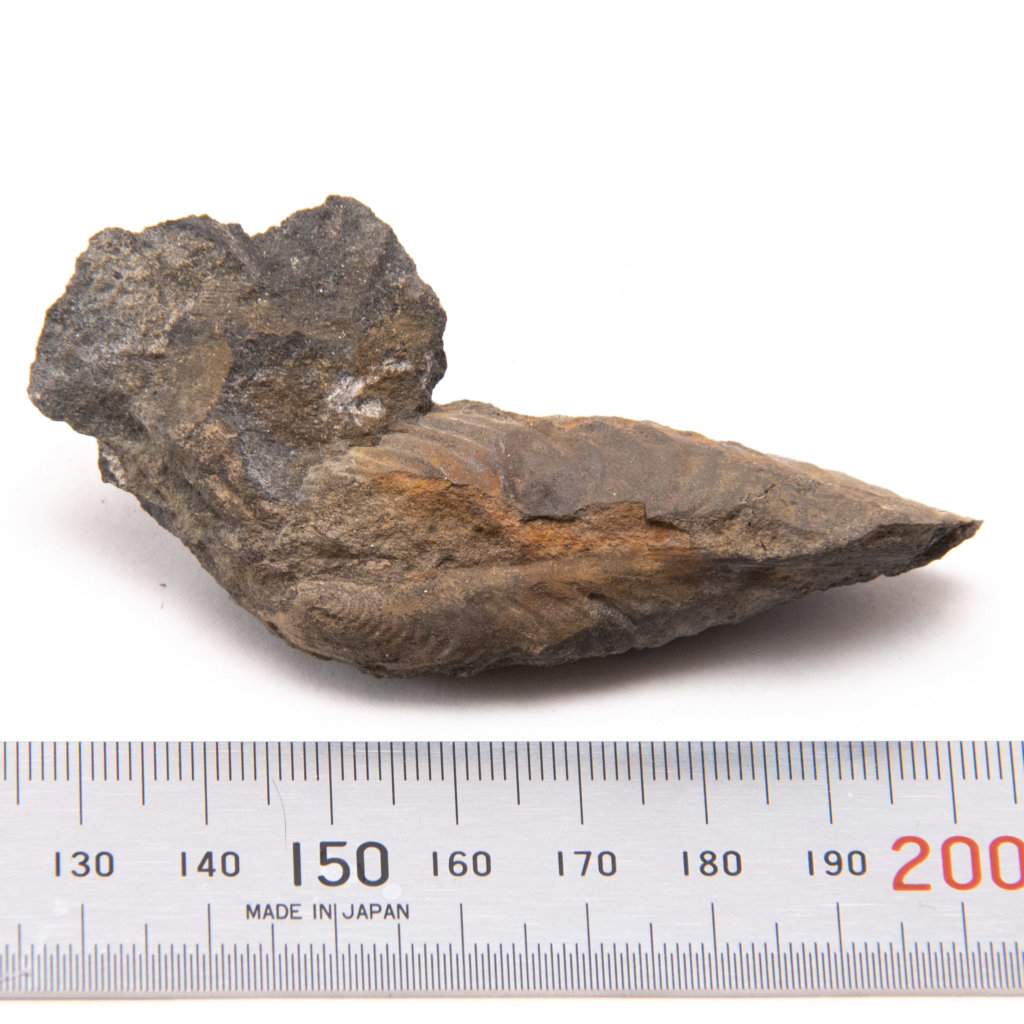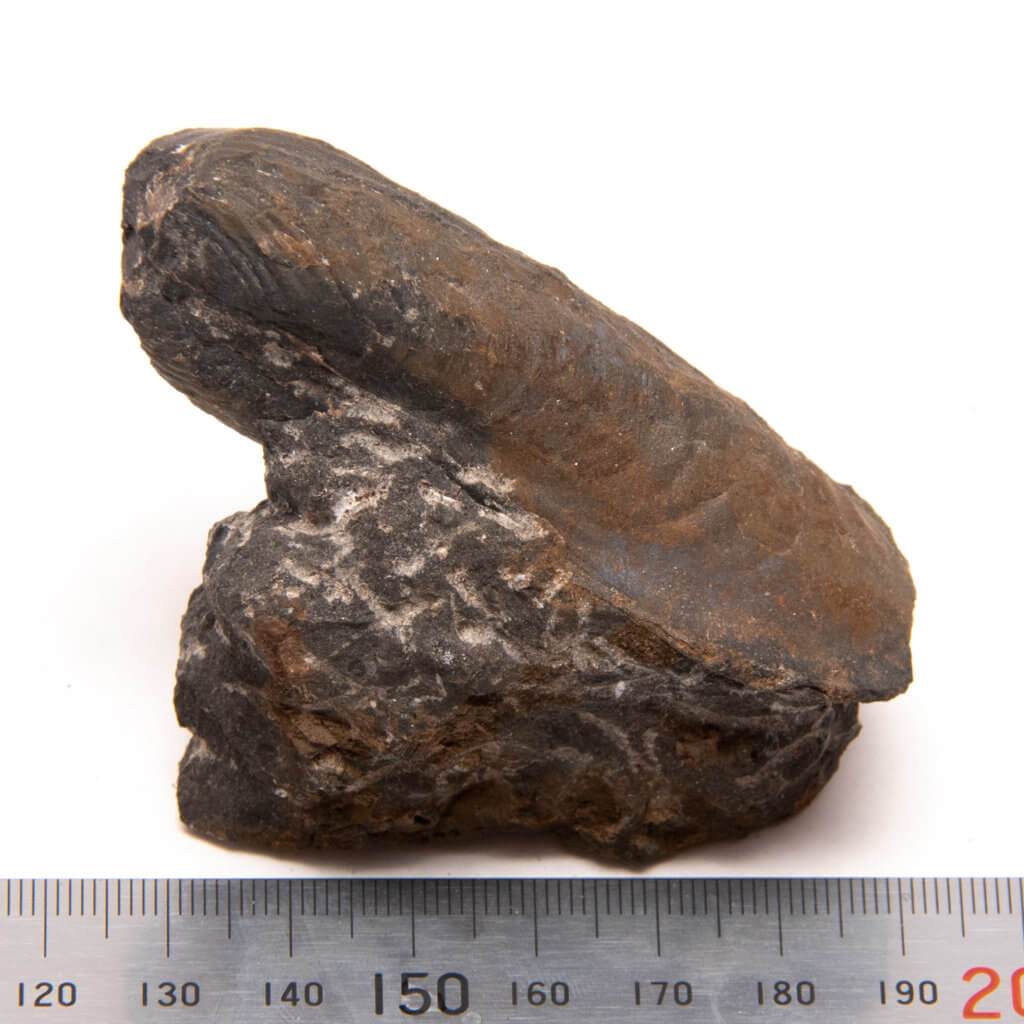Wilsome described the genus Wilkingia in 1959. Hoare named the species W. terminale in 1961. A very common bivalve, I have collected a few dozen specimens of Wilkingia over the past year. I have collected ten different specimens that were complete as far as length goes. Unfortunately, many specimens are missing one or the other side.
It is known for its large inequilateral equivalved elongate shells (Hoare 1979). The surface has coarse concentric growth rings.


Wilkingia Specimen Measurements
| Catalog ID | Genus | Length (mm) | Width A (mm) | Width B (mm) |
|---|---|---|---|---|
| CG-0012 | Wilkingia | 65 | 20 | 22 |
| CG-0031 | Wilkingia | 88 | 26 | 28 |
| CG-0041 | Wilkingia | 62 | 24 | 25 |
| CG-0044 | Wilkingia | 73 | 18 | 40 |
| CG-0049 | Wilkingia | 72 | 24 | 22 |
| CG-0050 | Wilkingia | 85 | 35 | 30 |
| CG-0051 | Wilkingia | 62 | 20 | 32 |
| CG-0052 | Wilkingia | 72 | * | 24 |
| CG-0053 | Wilkingia | 72 | 18 | 30 |
| CG-0054 | Wilkingia | 75 | 24 | 30 |
Width A: Valve to valve
Width B: Single valve width
Widths vary significantly due to differences in compression post burial. Depending on orientation, compression can be wildly different from specimen to specimen
Wilkingia Specimen Photos










References
- 1998, Mangano, M.G., Buatois, L.A, West, R.R., Maples, C.G., Contrasting Behavioral and Feeding Strategies Recorded by Tidal-flat Bivalve Trace Fossils from the Upper Carboniferous of Eastern Kansas, Palaios, 1998, V. 13, P 335-351


